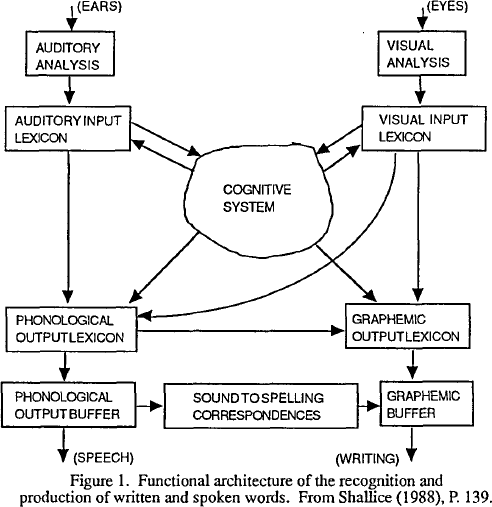No CrossRef data available.
Article contents
Is Cognitive Neuropsychology Possible?
Published online by Cambridge University Press: 28 February 2022
Extract
The aim of contemporary cognitive neuropsychology is to articulate the functional architecture underlying normal human cognitive abilities, on the basis of patterns of performance over a variety of cognitive tasks involving subjects with varying degrees of brain-damage. An example of a contemporary functional architecture is the following model for the recognition and production of spoken and written words:

The modular processing components in this ‘box-and-arrow’ functional architecture represent functionally independent subsystems that perform computational transformations on the representations that originate as input along the connecting links, providing a theory of cognition at the algorithmic and representational level (not the implementational or ‘hardware’ level).
- Type
- Part XI. Philosophy of Psychology and Perception
- Information
- Copyright
- Copyright © 1994 by the Philosophy of Science Association
Footnotes
This material is based upon work supported by the National Science Foundation under Grants SBE-9012399 and SBE-9122696. I want to thank Clark Glymour and Dan Bub for helpful discussions.


